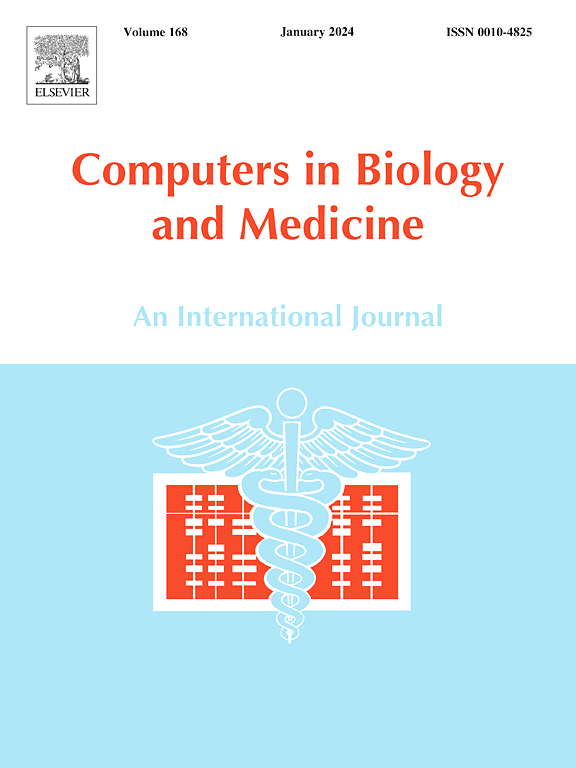Generating 3D brain tumor regions in MRI using vector-quantization Generative Adversarial Networks
IF 7
2区 医学
Q1 BIOLOGY
引用次数: 0
Abstract
Medical image analysis has significantly benefited from advancements in deep learning, particularly in the application of Generative Adversarial Networks (GANs) for generating realistic and diverse images that can augment training datasets. The common GAN-based approach is to generate entire image volumes, rather than the region of interest (ROI). Research on deep learning-based brain tumor classification using MRI has shown that it is easier to classify the tumor ROIs compared to the entire image volumes. In this work, we present a novel framework that uses vector-quantization GAN and a transformer incorporating masked token modeling to generate high-resolution and diverse 3D brain tumor ROIs that can be used as additional data for tumor ROI classification. We apply our method to two imbalanced datasets where we augment the minority class: (1) low-grade glioma (LGG) ROIs from the Multimodal Brain Tumor Segmentation Challenge (BraTS) 2019 dataset; (2) BRAF V600E Mutation genetic marker tumor ROIs from the internal pediatric LGG (pLGG) dataset. We show that the proposed method outperforms various baseline models qualitatively and quantitatively. The generated data was used to balance the data to classify brain tumor types. Our approach demonstrates superior performance, surpassing baseline models by 6.4% in the area under the ROC curve (AUC) on the BraTS 2019 dataset and 4.3% in the AUC on the internal pLGG dataset. The results indicate the generated tumor ROIs can effectively address the imbalanced data problem. Our proposed method has the potential to facilitate an accurate diagnosis of rare brain tumors using MRI scans.
利用矢量量化生成对抗网络在MRI中生成三维脑肿瘤区域。
医学图像分析极大地受益于深度学习的进步,特别是在生成对抗网络(gan)的应用中,用于生成可以增强训练数据集的逼真和多样化的图像。常见的基于gan的方法是生成整个图像体积,而不是感兴趣区域(ROI)。基于深度学习的MRI脑肿瘤分类研究表明,与整个图像体积相比,肿瘤roi更容易分类。在这项工作中,我们提出了一个新的框架,该框架使用矢量量化GAN和包含掩码令牌建模的变压器来生成高分辨率和多样化的3D脑肿瘤ROI,可作为肿瘤ROI分类的附加数据。我们将该方法应用于两个不平衡数据集,其中我们增加了少数类别:(1)来自2019年多模态脑肿瘤分割挑战(BraTS)数据集的低级别胶质瘤(LGG) roi;(2) BRAF V600E突变基因标记物肿瘤roi来自儿童LGG (pLGG)内部数据集。我们表明,所提出的方法在定性和定量上优于各种基线模型。生成的数据被用来平衡数据来对脑肿瘤类型进行分类。我们的方法表现出优异的性能,在BraTS 2019数据集上的ROC曲线下面积(AUC)比基线模型高出6.4%,在内部pLGG数据集上的AUC高出4.3%。结果表明,生成的肿瘤roi可以有效地解决数据不平衡问题。我们提出的方法有潜力促进罕见脑肿瘤的准确诊断使用MRI扫描。
本文章由计算机程序翻译,如有差异,请以英文原文为准。
求助全文
约1分钟内获得全文
求助全文
来源期刊

Computers in biology and medicine
工程技术-工程:生物医学
CiteScore
11.70
自引率
10.40%
发文量
1086
审稿时长
74 days
期刊介绍:
Computers in Biology and Medicine is an international forum for sharing groundbreaking advancements in the use of computers in bioscience and medicine. This journal serves as a medium for communicating essential research, instruction, ideas, and information regarding the rapidly evolving field of computer applications in these domains. By encouraging the exchange of knowledge, we aim to facilitate progress and innovation in the utilization of computers in biology and medicine.
 求助内容:
求助内容: 应助结果提醒方式:
应助结果提醒方式:


